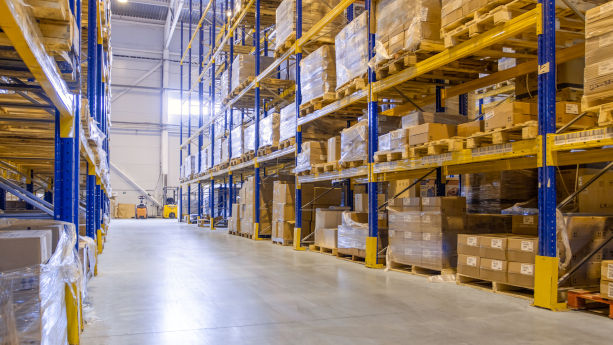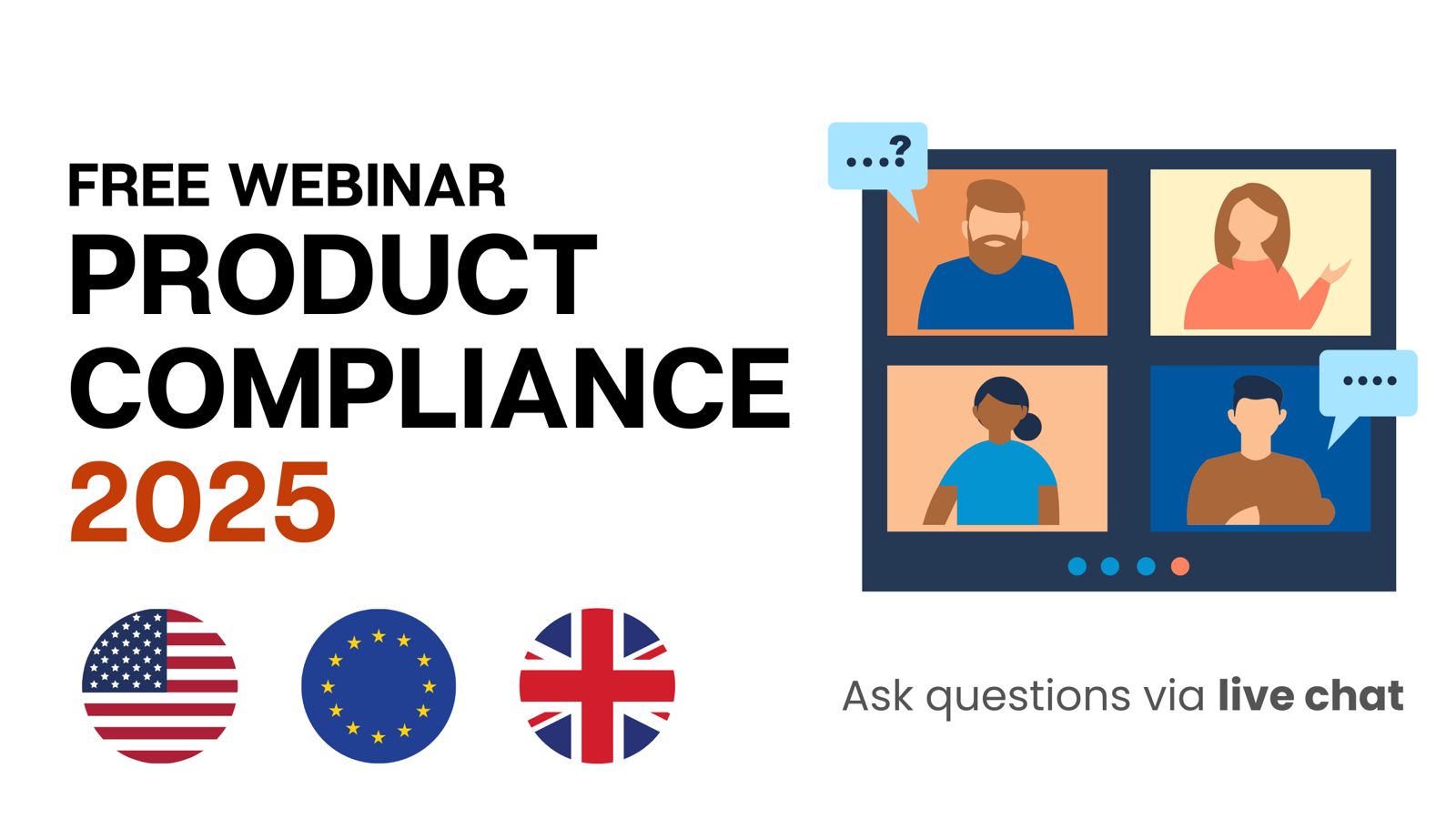
The Market Surveillance Regulation aims at ensuring that products sold to consumers are safe and prevents general non-compliance.
For some categories of products, toys and electronics for example, it sets certain tasks that must be performed by manufacturers – or their authorised representative, in the case of non-EU manufacturers that sell to consumers in the EU, – and other economic operators.
In this guide, we explain what the requirements of the Market Surveillance Regulation are, what products it covers, and elaborate on its impact on manufacturers, importers, and other economic operators from both EU and non-EU countries. This includes businesses based in the United Kingdom.
Content Overview

FREE CONSULTATION CALL (US, EU & UK)
- Request a free 30-minute call with Ivan Malloci to learn how we can help you with:
- Find product requirements
- Certification and labeling
- Lab testing
What is the Market Surveillance Regulation?
The Market Surveillance Regulation exists to strengthen the surveillance of products that are sold in the EU These are products that are affected by harmonisation legislation, like the Toy Safety Directive. The ultimate aim of the Market Surveillance Regulation is to ensure that products comply with such legislation.
To this aim, the regulation requires economic operators such as manufacturers, importers, and distributors to cooperate with national market surveillance authorities. An example of a market surveillance authority in Italy for toy products would be the Ministero della Salute (Ministry of Health).
Products offered directly to consumers via distance sales are also covered. Thus, cross-border B2C transactions would be affected by the regulation. This is the case, for example, of a Chinese manufacturer or trader selling directly to consumers in the EU.
Non-EU-based manufacturers would have to appoint an authorised representative to work with market surveillance authorities.
General requirements
Products affected by regulations listed in Article 4(5) of the regulation can only be sold in EU markets if specific economic operators established in the EU are responsible for the product:
Article 4 – Tasks of economic operators regarding products subject to certain Union harmonisation legislation
1. Notwithstanding any obligations set out in applicable Union harmonisation legislation, a product subject to legislation referred to in paragraph 5 may be placed on the market only if there is an economic operator established in the Union who is responsible for the tasks set out in paragraph 3 in respect of that product. […]
Only the following EU economic operators can satisfy the requirement:
- A manufacturer
- An importer
- An authorised representative
- A fulfilment service provider
Thus, non-EU companies that sell directly to consumers in the EU need to contract an authorised representative to perform certain tasks.
Cooperation activities
The Market Surveillance Regulation requires economic operators to work with market surveillance authorities and take steps to eliminate or mitigate risks presented by their products. Examples of such “cooperation activities” include:
- Providing requested compliance documents related to the product
- Complying with a sales ban or a warning message regarding a product
- Complying with a recall order
Compliance documents mentioned above refer to documents such as the following:
a. Documentation necessary to demonstrate the conformity of the product
c. Declaration of Performance (for construction products)
Labelling requirements
The company name and contact details of the economic operator should be affixed to the product, packaging, or accompanying documents.
Product examples
Here are some examples of products that would be affected by the requirement above:
- Construction products
- Personal protective equipment
- Batteries
- Machinery
- Toys
- Electronic and electrical products
- Measuring instruments
Note that with the introduction of the General Product Safety Regulation most consumer products will also have to comply with the requirements of Article 4 of the Market Surveillance Regulation such as the one listed above, even if they are not covered by a regulation listed in Article 4(5).
Which products are covered by the Market Surveillance Regulation?
The Market Surveillance Regulation covers products that are subject to the union harmonisation legislation listed in Annex I of the regulation. This includes most all consumer products, given the fact that the REACH Regulation is mentioned in the list – and it sets substance restrictions for products in general.
However, the requirements listed in Article 4 of the Market Surveillance Regulation, such as the EU authorised representative requirement, only apply to the product categories subject to regulations listed in Article 4(5). Below is a table which contains the regulations mentioned in Article 4 and their respective product scopes.
| Regulation name | Product scope |
| Construction Products Regulation (EU) 305/2011 | Construction products |
| Personal Protective Equipment Regulation (EU) 2016/425 | Personal protective equipment |
| Appliances Burning Gaseous Fuels Regulation (EU) 2016/426 | Appliances or fittings burning gaseous fuels |
| Batteries Regulation (EU) 2023/1542 | Batteries |
| Noise Directives 2000/14/EC | Equipment for use outdoors |
| Machinery Directive 2006/42/EC | Machinery |
| Toy Safety Directive 2009/48/EC | Toys |
| Ecodesign Directive 2009/125/EC | Home and office appliances, lighting products and other energy-related products |
| RoHS Directive 2011/65/EU | Electrical and electronic equipment |
| Pyrotechnic Articles 2013/29/EU | Pyrotechnic articles |
| Recreational Craft and Personal Watercraft 2013/53/EU | Recreational craft and personal watercraft |
| Simple Pressure Vessels 2014/29/EU | Simple pressure vessels |
| Electromagnetic Compatibility Directive 2014/30/EU | Electrical and electronic equipment |
| Non-automatic weighing instruments 2014/31/EU | Non-automatic weighing instruments |
| Measuring Instruments Directive 2014/32/EU | Measuring instruments |
| ATEX 2014/34/EU | Equipment and protective systems intended for use in potentially explosive atmospheres |
| Low Voltage Directive 2014/35/EU | Electrical equipment |
| Radio Equipment Directive 2014/53/EU | Radio equipment |
| Pressure Equipment 2014/68/EU | Pressure equipment |
How does the Market Surveillance Regulation impact EU manufacturers?
A manufacturer can refer to an individual or a business that manufactures the product or has it manufactured or designed by a third party, and markets the product under its name or trademark. For instance, private labellers would be seen as manufacturers under the Market Surveillance Regulation.
Manufacturers established in the EU and selling products covered by the list of legislation referred to in Article 4(5) are required to perform specific tasks. Such tasks include the following:
a. Drawing the declaration of conformity or declaration of performance, and keeping it at the disposal of market surveillance authorities
b. Ensuring that technical documentation is available for inspection
c. Complying with requests from authorities for information related to the product
d. Informing authorities when there is a reason to believe that the product presents risks
e. Taking corrective actions to correct instances of product non-compliance
f. Mitigating the risks presented by the product
How does the Market Surveillance Regulation impact EU importers?
An importer refers to an individual or business established in the EU that sells a product from a third country on EU markets. If the manufacturer is not established in the EU, the importer can be the responsible person for the product. Importers are required to perform tasks similar to those listed in the previous section.
Note, however, that if you sell an imported product under your name or trademark, you are considered as the manufacturer, even if you are importing the product.
How does the Market Surveillance Regulation impact EU distributors?
A distributor refers to an individual or business that is involved in the supply and distribution of the product in the EU.
Distributors can not satisfy the responsible person requirement set by the Market Surveillance Regulation. This means that distributors have to make sure that there exists a manufacturer, an importer, an authorised representative or a fulfilment service provider responsible for the product.
How does the Market Surveillance Regulation impact EU fulfilment service providers?
A fulfilment service provider refers to an individual or a business that offers at least two of the following services relating to products they do not have ownership over:
- Warehousing
- Packaging
- Addressing
- Dispatching
Postal services or freight transport services are excluded from the definition. Here are some examples of fulfilment service providers:
- Amazon FBA
- ShipMonk
- Huubo
- Autofulfil
Fulfilment service providers based in the EU can be “responsible” for the product under the Market Surveillance Regulation.
However, it should be noted that just because a fulfilment service provider can be responsible for the product under the regulation, does not mean that it would offer such a service. Thus, you should assess whether the platform you are using offers such services or find an authorised representative, if your company is not based in the EU.
How does the Market Surveillance Regulation impact manufacturers outside the EU?
Manufacturers outside the EU, including those involved in distance sales, can not place products covered by regulations listed in Article 4(5) of the Market Surveillance Regulation into EU markets unless they are working with an EU economic operator.
In practice, this means that manufacturers from non-EU countries selling directly to consumers in the EU should engage an authorised representative.
An authorised representative refers to an individual or business established in the EU that has received written instructions to act on the manufacturer’s behalf and complete the tasks impacting the manufacturer under the regulation (see the section above concerning how the regulation impacts the manufacturer).
There are many companies that offer authorised representative services in the EU. Here are some examples of businesses offering such services:
- 24hour-AR
- QIMA
- ProductIP
- AR Experts
- CIRS
You can find more companies and information on this page.
How does the Market Surveillance Regulation impact UK companies selling to the EU?
As the United Kingdom has left the EU post-Brexit, this would mean that UK businesses can not sell products covered by Article 4 of the Market Surveillance Regulation, including through distance sales, unless they have a presence in the EU or are working with an authorised representative based in the EU.
















